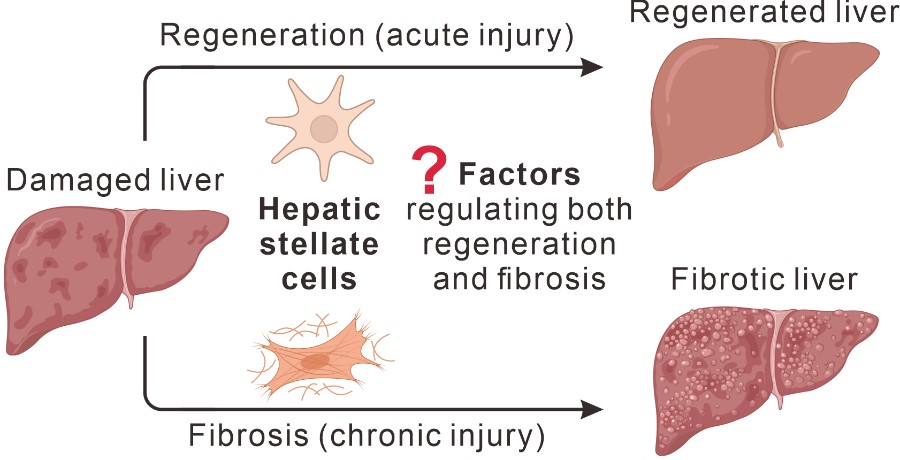A research team led by the Guangzhou Institutes of Biomedicine and Health of the Chinese Academy of Sciences, in collaboration with the Eastern Hepatobiliary Surgery Hospital of the Second Military Medical University, has identified the transcription factor Lhx2 (LIM homeobox protein 2) as a key regulator in hepatic stellate cells. Lhx2 was found to simultaneously promote liver regeneration and inhibit liver fibrosis. The findings were published in Hepatology.
The liver is the human body's most regenerative solid organ. However, chronic liver injury can severely impair this regenerative capacity, leading to liver fibrosis. Hepatic stellate cells (HSCs), the liver's primary mesenchymal cells, play a critical role in both regeneration and fibrosis. Despite their importance, it remains unclear whether specific genes in HSCs can simultaneously promote regeneration and inhibit fibrosis.
In this study, the researchers compared liver pathological phenotypes and hepatic stellate cell (HSC) expression profiles during the repair phase following acute and chronic liver injury. They discovered that HSCs are critical regulators of liver regeneration and fibrosis. Using differential transcription factor screening and public single-cell transcriptomic data, they identified the transcription factor Lhx2 in HSCs as a dual-function regulator of liver regeneration and fibrosis. Further analysis with RNA-seq and CUT&Tag revealed that Lhx2 upregulates regenerative factors while suppressing genes linked to HSC activation.
To validate Lhx2's function at the animal level, the team developed mouse models of acute and chronic liver injury using CCl4. By injecting modified si-RNAs, they demonstrated that Lhx2 knockdown impaired hepatocyte proliferation and liver function recovery after acute injury. Additionally, using Lrat-cre (HSC-specific cre) mice and AAV8-DIO-mLhx2 virus, they overexpressed Lhx2 specifically in HSCs, confirming that Lhx2 promotes liver regeneration and repair after acute injury while inhibiting fibrosis in chronic injury. At the molecular level, Lhx2 was found to promote hepatocyte proliferation by upregulating HGF expression in HSCs. It also inhibited HSC activation and fibrosis by upregulating SMAD6, which blocks the TGF-β signaling pathway.
This study systematically demonstrated the critical role of HSCs in liver regeneration and fibrosis at the molecular, cellular, and animal levels. It also elucidated the molecular mechanisms by which Lhx2 regulates these processes, offering new insights for the treatment of liver diseases.
This work was supported by the National Key R&D Program, the National Natural Science Foundation, the Guangdong Provincial Science and Technology Program, among others.

Figure. Hepatic stellate cells play an important role in regeneration and fibrosis after liver injury, but the target genes that simultaneously regulate both processes in hepatic stellate cells are not yet clear (Image by Prof. WANG's team)






